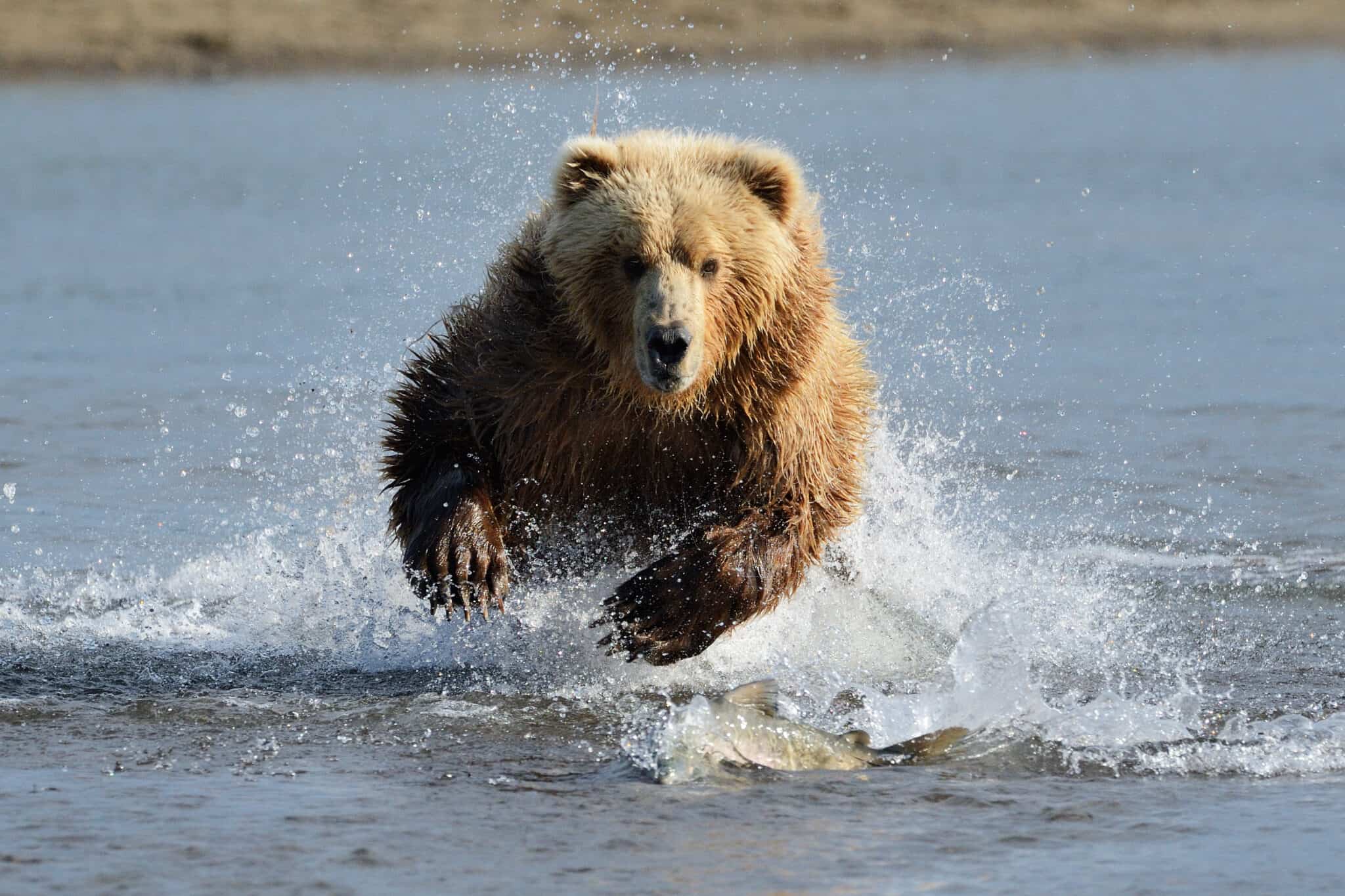When we think of the world's fattest animals, images of massive creatures like elephants, whales, and hippos might immediately come to mind. These animals are not just large in size but also carry significant weight, making them fascinating subjects of study. Understanding the world's fattest animals is not just about appreciating their sheer size but also learning about their roles in ecosystems, their unique adaptations, and the challenges they face in a rapidly changing world. From the depths of the ocean to the vast savannahs, these animals play crucial roles in maintaining ecological balance. In this article, we will delve deep into the world of the world's fattest animals, exploring their biology, behavior, and conservation status.
The world's fattest animals are often misunderstood. While their size might seem intimidating, these creatures are essential for the health of their respective ecosystems. For instance, large marine mammals like whales contribute to nutrient cycling in oceans, while elephants shape their environments by creating pathways and spreading seeds. Despite their importance, many of these animals face threats such as habitat loss, climate change, and human-wildlife conflict. Understanding their significance can help us take steps toward their conservation.
In this comprehensive guide, we will explore the top 10 fattest animals in the world, their unique characteristics, and their ecological roles. We will also discuss the challenges these animals face and what we can do to protect them. Whether you're an animal enthusiast, a student of biology, or someone curious about the wonders of nature, this article will provide valuable insights into the world's fattest animals and why they matter.
Read also:Movie Rulzcom Kannada 2024 Your Ultimate Guide To The Latest Kannada Movies
Table of Contents
- Biography of the World's Fattest Animals
- Blue Whale: The Largest Animal on Earth
- African Elephant: The Land Giant
- Hippopotamus: The River Horse
- Saltwater Crocodile: The Mighty Reptile
- Giraffe: The Tallest Land Animal
- Rhinoceros: The Armored Beast
- Walrus: The Arctic Giant
- Orca: The Apex Predator
- Polar Bear: The Arctic Predator
- Conservation Efforts for the World's Fattest Animals
Biography of the World's Fattest Animals
The world's fattest animals are not just defined by their weight but also by their unique adaptations and ecological roles. These animals have evolved over millions of years to thrive in their respective environments, whether it's the ocean, savannah, or Arctic. Below is a table summarizing the key characteristics of some of the world's fattest animals:
| Animal | Weight (Approx.) | Habitat | Conservation Status |
|---|---|---|---|
| Blue Whale | 200 tons | Oceans | Endangered |
| African Elephant | 6 tons | Savannahs | Vulnerable |
| Hippopotamus | 3.5 tons | Rivers and Lakes | Vulnerable |
| Saltwater Crocodile | 1 ton | Coastal Wetlands | Least Concern |
| Polar Bear | 0.6 tons | Arctic | Vulnerable |
Blue Whale: The Largest Animal on Earth
The blue whale holds the title of the largest and heaviest animal on Earth, weighing up to 200 tons. These marine giants can grow up to 100 feet in length and are found in oceans worldwide. Despite their immense size, blue whales feed primarily on tiny shrimp-like creatures called krill, consuming up to 4 tons of krill per day during feeding seasons.
Unique Adaptations
- Blue whales have a streamlined body that allows them to swim efficiently in the ocean.
- Their baleen plates filter out krill from the water, enabling them to consume vast amounts of food.
- Blue whales can communicate over long distances using low-frequency sounds.
Despite their size, blue whales face threats from ship strikes, entanglement in fishing gear, and climate change, which affects their food supply. Conservation efforts are underway to protect these magnificent creatures and ensure their survival.
African Elephant: The Land Giant
African elephants are the largest land animals, weighing up to 6 tons. These majestic creatures are found in various habitats across Africa, from savannahs to forests. African elephants play a crucial role in their ecosystems by shaping the landscape and dispersing seeds.
Ecological Importance
- African elephants create water holes used by other animals during dry seasons.
- They help maintain the balance of plant species by uprooting trees and shrubs.
- Their dung provides nutrients for the soil and serves as a breeding ground for insects.
Unfortunately, African elephants are threatened by poaching for their ivory tusks and habitat loss. Conservation organizations are working to protect these animals through anti-poaching measures and habitat preservation.
Hippopotamus: The River Horse
Hippopotamuses, often referred to as "river horses," are semi-aquatic mammals that weigh up to 3.5 tons. Found in rivers and lakes across sub-Saharan Africa, hippos spend most of their time in water to stay cool and avoid the sun.
Read also:Milly Shapiro The Rising Star In Hollywood
Behavioral Traits
- Hippos are highly territorial and can be aggressive when defending their space.
- Despite their large size, they can run surprisingly fast on land.
- Hippos are herbivores, feeding mainly on grasses during the night.
Habitat destruction and human-wildlife conflict pose significant threats to hippopotamuses. Conservation efforts focus on protecting their habitats and reducing conflicts with local communities.
Saltwater Crocodile: The Mighty Reptile
Saltwater crocodiles are the largest living reptiles, weighing up to 1 ton. Found in coastal regions of Southeast Asia and northern Australia, these apex predators are known for their powerful jaws and stealthy hunting techniques.
Hunting Strategies
- Saltwater crocodiles use a "death roll" technique to subdue their prey.
- They can remain submerged for long periods, waiting for the perfect moment to strike.
- Their diet includes fish, birds, and even large mammals like deer.
While saltwater crocodiles are not currently endangered, they face threats from habitat loss and illegal hunting. Conservation programs aim to protect their habitats and regulate hunting practices.
Giraffe: The Tallest Land Animal
Giraffes are the tallest land animals, with males weighing up to 1.5 tons. Found in savannahs across Africa, giraffes are known for their long necks, which allow them to feed on leaves high up in trees.
Unique Features
- Giraffes have a unique pattern of spots that helps them blend into their surroundings.
- Their long necks enable them to reach food sources unavailable to other herbivores.
- Giraffes have a specialized cardiovascular system to pump blood to their brains.
Giraffes face threats from habitat loss and poaching. Conservation efforts focus on protecting their habitats and raising awareness about their importance in ecosystems.
Rhinoceros: The Armored Beast
Rhinoceroses are large, herbivorous mammals known for their thick, armored skin and distinctive horns. Depending on the species, rhinos can weigh up to 2.5 tons and are found in Africa and Asia.
Conservation Challenges
- Rhinos are heavily targeted by poachers for their horns, which are prized in traditional medicine.
- Habitat loss and fragmentation have reduced their populations.
- Conservation programs focus on anti-poaching measures and habitat restoration.
Efforts to protect rhinos involve international cooperation and community engagement to reduce poaching and preserve their habitats.
Walrus: The Arctic Giant
Walruses are large marine mammals that weigh up to 2 tons. Found in the Arctic and sub-Arctic regions, walruses are known for their tusks, which they use for climbing onto ice and defending themselves.
Adaptations to Cold Environments
- Walruses have a thick layer of blubber to insulate them from the cold.
- Their tusks are used for breaking ice and hauling themselves onto land.
- They feed on clams and other benthic organisms found on the ocean floor.
Climate change and melting sea ice pose significant threats to walruses. Conservation efforts focus on addressing climate change and protecting their habitats.
Orca: The Apex Predator
Orcas, also known as killer whales, are apex predators that weigh up to 6 tons. Found in oceans worldwide, orcas are highly intelligent and social animals that hunt in coordinated groups.
Hunting Techniques
- Orcas use echolocation to locate prey and communicate with each other.
- They employ sophisticated hunting strategies, such as encircling prey.
- Their diet includes fish, seals, and even other whales.
Orcas face threats from pollution, overfishing, and habitat degradation. Conservation efforts focus on reducing pollution and protecting their food sources.
Polar Bear: The Arctic Predator
Polar bears are iconic Arctic predators that weigh up to 0.6 tons. Adapted to the cold, these bears rely on sea ice for hunting seals, their primary food source.
Challenges in a Warming World
- Melting sea ice reduces polar bears' access to prey, leading to malnutrition.
- Climate change is the biggest threat to polar bears' survival.
- Conservation efforts focus on reducing greenhouse gas emissions and protecting Arctic habitats.
Protecting polar bears requires global cooperation to address climate change and preserve their fragile ecosystems.
Conservation Efforts for the World's Fattest Animals
The world's fattest animals face numerous threats, from habitat loss to climate change. Conservation efforts are crucial to ensuring their survival and preserving the ecosystems they inhabit. Below are some key strategies being implemented:
Key Conservation Strategies
- Establishing protected areas to safeguard habitats.
- Implementing anti-poaching laws and enforcing them rigorously.
- Promoting community-based conservation initiatives.
By supporting conservation organizations and raising awareness, we can help protect these incredible animals for future generations. Whether through donations, volunteering, or spreading the word, every action

